Despite the ongoing rumors of their demise (many of which started in the 1980s), mid-size double-action revolvers keep circling back as a subject of interest in the U.S. shooting sports community. This year, the used handgun market has enjoyed an increased selection of retired Smith & Wesson Model 10 and Model 64 service revolvers as they have been imported back into the country or brought out of deep storage by various dealers.
Considering their exceptionally long production history, obtaining an early example of these .38 Special wheelguns can prove to be a challenge. However, I recently received one of the last to be produced. Here is a closer look at a Smith & Wesson Model 64-8. The revolvers shown here, including the Model 64-7 shown in some of the photos, were provided for this evaluation by AIM Surplus.
Background
Among the most successful double-action revolvers ever invented, the six-shot Smith & Wesson Model 10 has been in production in some form or another for over 125 years. The first K-Frame revolver, the .38 Military & Police (M&P), was introduced in 1899. Outfitted with barrels between 4″ to 8″ in length, it quickly became one of Smith & Wesson’s most popular models. Based on the same sturdy and reliable design, the blued steel Model 10 was launched in 1957 with millions of units in a variety of barrel configurations produced over the years.
The stainless steel version of the Model 10, dubbed the Model 64, was introduced in 1970. The steady sales of these guns were due in no small part to their wide adoption by law enforcement and security agencies. Although Colt and Ruger models did make their way into service, the K-frames became the “standard” by which all other duty revolvers were judged.
However, by the 1990s, law enforcement agencies were in the process of, or had already transitioned to, the use of semi-automatic pistols in place of revolvers as their on-duty sidearms. This switch to pistols significantly curtailed the sales of the Model 64. Although some “classic” configurations of the Model 10 are still being manufactured, the Model 64 was discontinued in October 2021.

In the course of its 51-year production history, the Model 64 went through eight significant design revisions. Smith & Wesson denotes these changes to their revolvers by engraving a dash and number following the model number. The first generation of a model omits the dash number (64) but each subsequent iteration does have one (64-2, 64-3, etc.). For the two revolvers shown here, a Model 64-7 and a 64-8, the model number and dash level are engraved into the frame below the serial number, which is located behind the cylinder crane; the numbers are small, but plainly visible, when the action is opened.

For the more dedicated wheelgun collector, the study of these revolvers’ dash levels with their related production history is an important part of the hobby. But whether or not Smith & Wesson chooses to tout a dash-level change, or just slip it in under the radar, has depended on how noticeable or, significant the changes have been. A new dash level may represent a new yoke retention system (64-4) or switching to a metal-injection-molded hammer with floating firing pin (64-6). In the case of the 64-8, one of the most notable updates was the new barrel configuration.
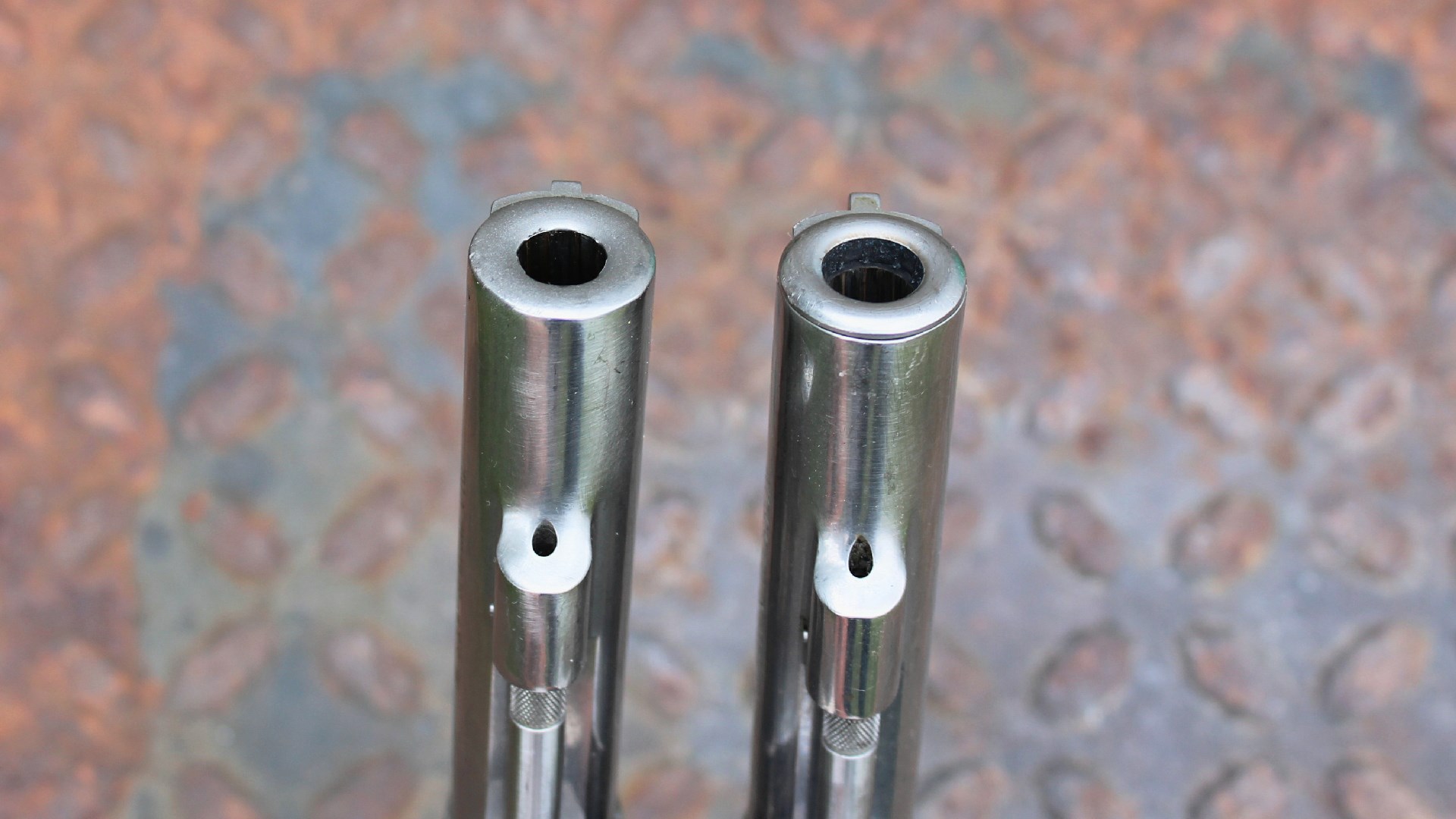
The Last Great Model 64-8
This version of the Model 64, like its numerous predecessors, is a double-action/single-action revolver deriving its design cues from Smith & Wesson’s 19th century Third Model Hand Ejector. It sports a heavy, straight-profile 4″ barrel and an all-stainless-steel construction for an unloaded weight of 36 ozs. The fixed sights consist of a ramped front sight with anti-glare serrations paired with a trough along the top of the receiver of which culminates in a square-notch rear sight. The gun sent for this review had not been cleaned for some time, resulting in a buildup of sticky gun oil residue and grime. I gave the gun a good scrub down, but not a detailed cleaning, before taking it to the range. As a result, you can see in the photos, some of that grime is still present in the sights.
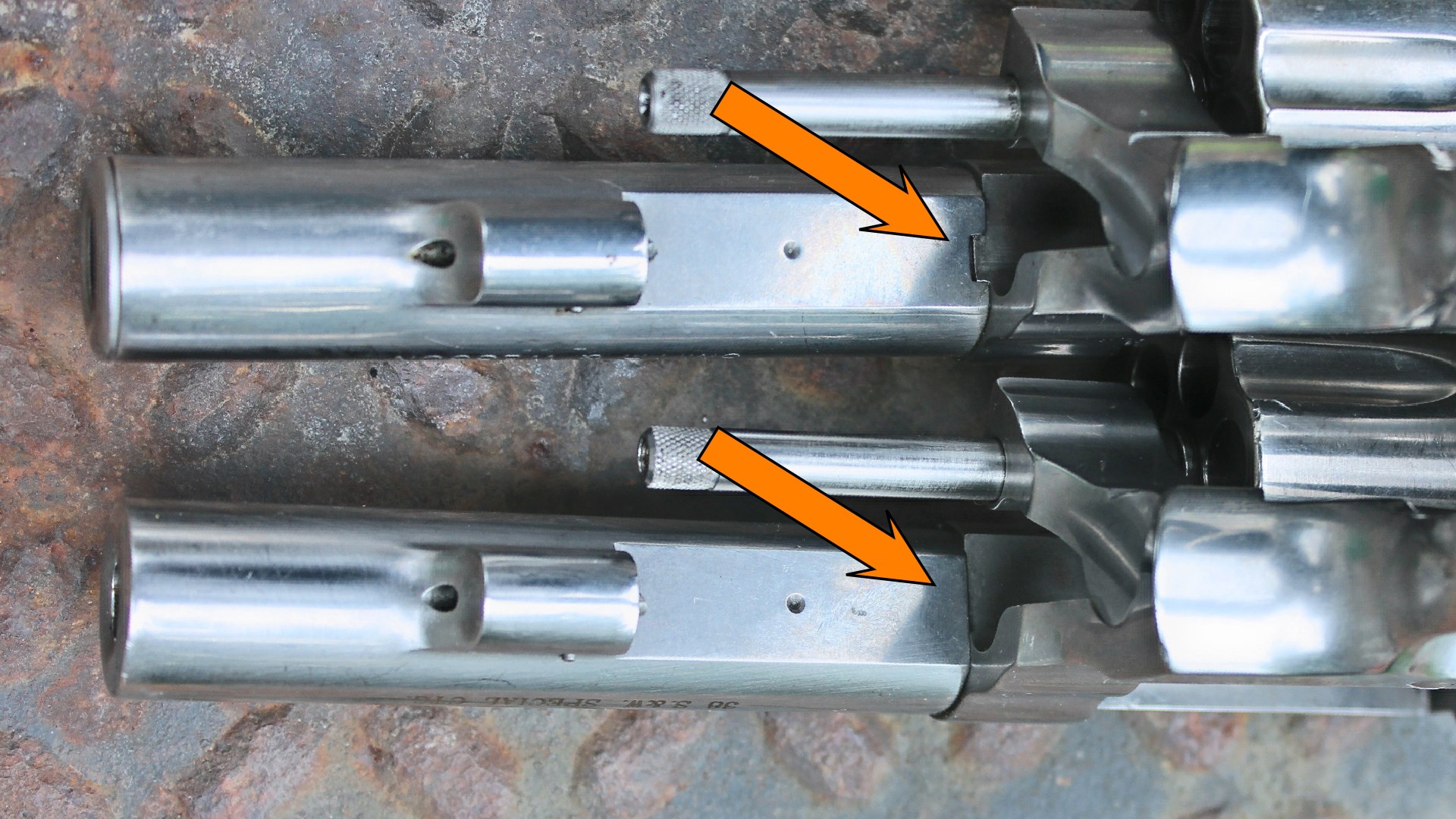
The barrel shroud of the 64-8 has a rounded extension with a spring-loaded detent that supports the knurled end of the cylinder’s ejector rod. The right side is stamped with “SMITH & WESSON” while the left side reads “.38 S&W SPL. +P.” Although the previous Model 64-7 is safe to shoot with +P ammunition, it does not have the +P markings found on the 64-8.
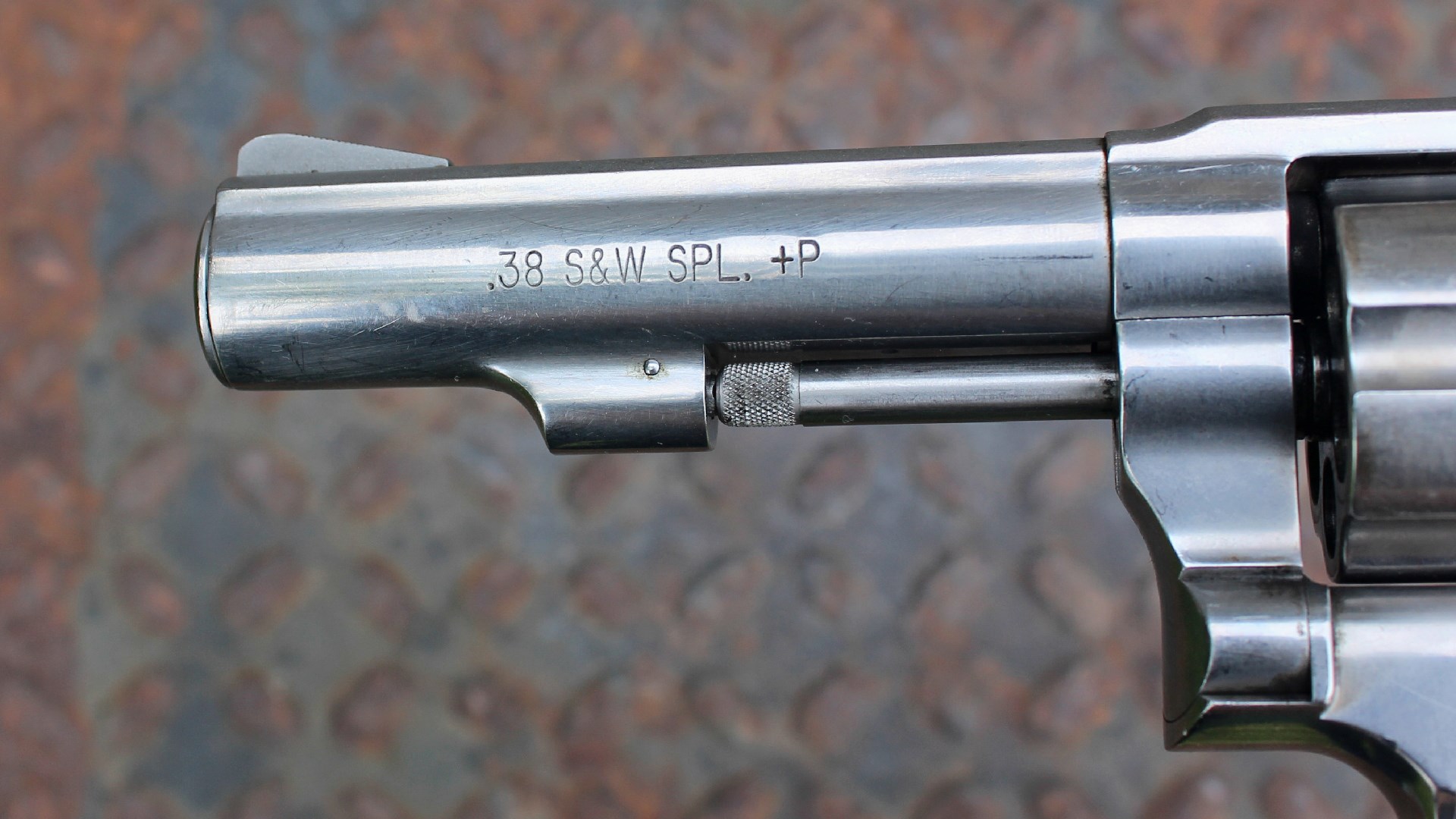
The fluted six-shot cylinder rotates counter clockwise and swings out to the left side of the frame in typical Smith and Wesson fashion. The exposed hammer, with its checkered spur, frame-mounted floating firing pin, the left-side integral safety lock, the “pie wedge” checkered cylinder release and the deeply curved, smooth-faced trigger are all the same as those found on the Model 64-7 I had on hand for comparison. They even have the same Uncle Mike’s brand rubber stocks designed to mimic the size and profile of a square-butt grip frame. But removing the stocks reveals that these guns are outfitted with the round-butt grip frames. This allows for the installation of more compact revolver grips like Hogue’s pebbled soft rubber Bantam monogrip.
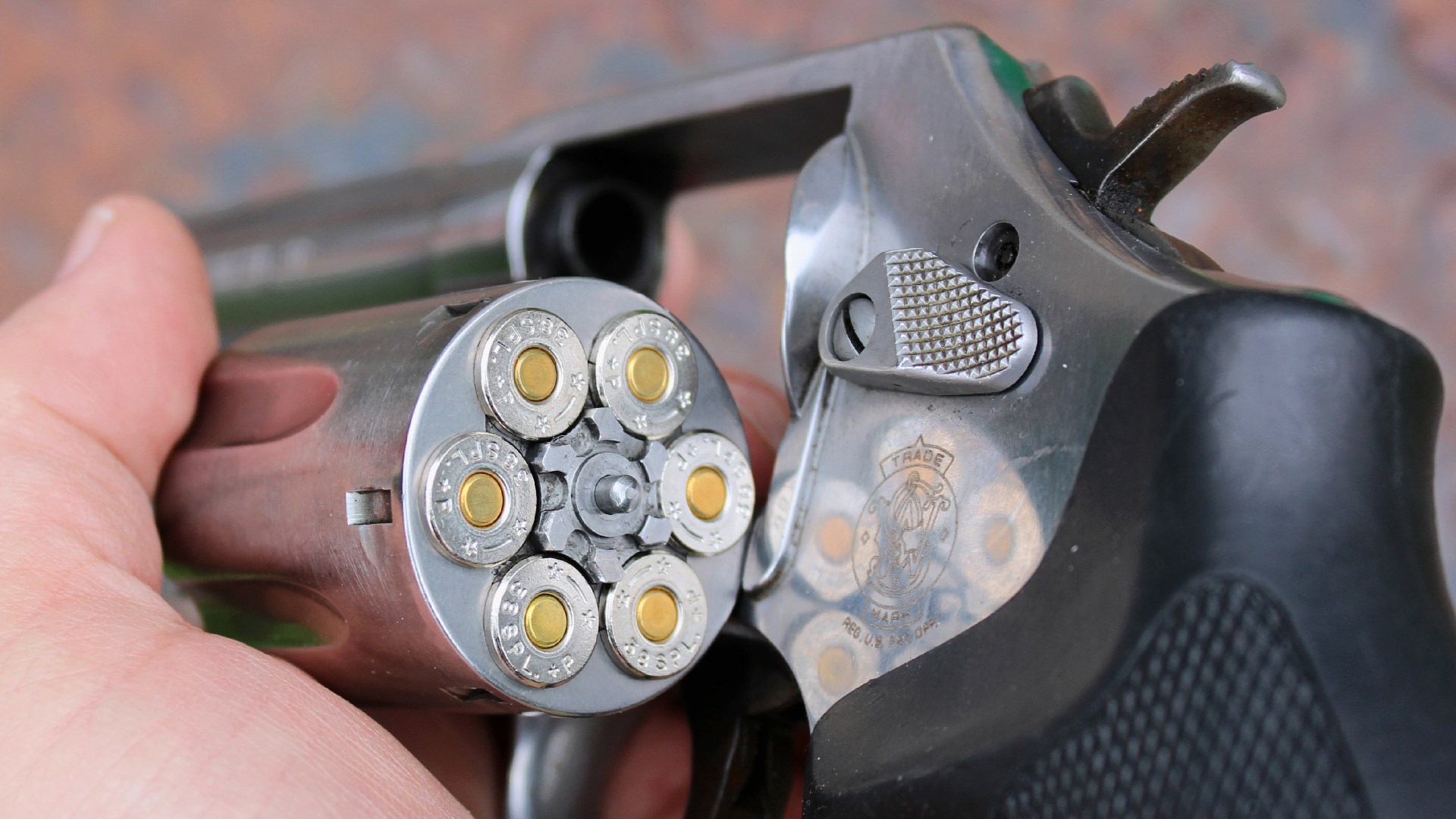
When they are compared, side-by-side, the Model 64-7 and Model 64-8 look almost identical. That is until you take a closer look at the barrels. The Model 64-7 is outfitted with the same one-piece barrel design that was a hallmark of the Smith & Wesson revolvers for decades. But the use of one-piece barrels came with a variety of production challenges. When threading the barrel into the frame, the front sight had to be perfectly aligned with the top of the frame and the rear sight. Torquing the barrel to precisely top dead center was no mean feat. Early on, barrel timing was an intensive, hands-on process that was time-consuming and could result in back and arm injuries.
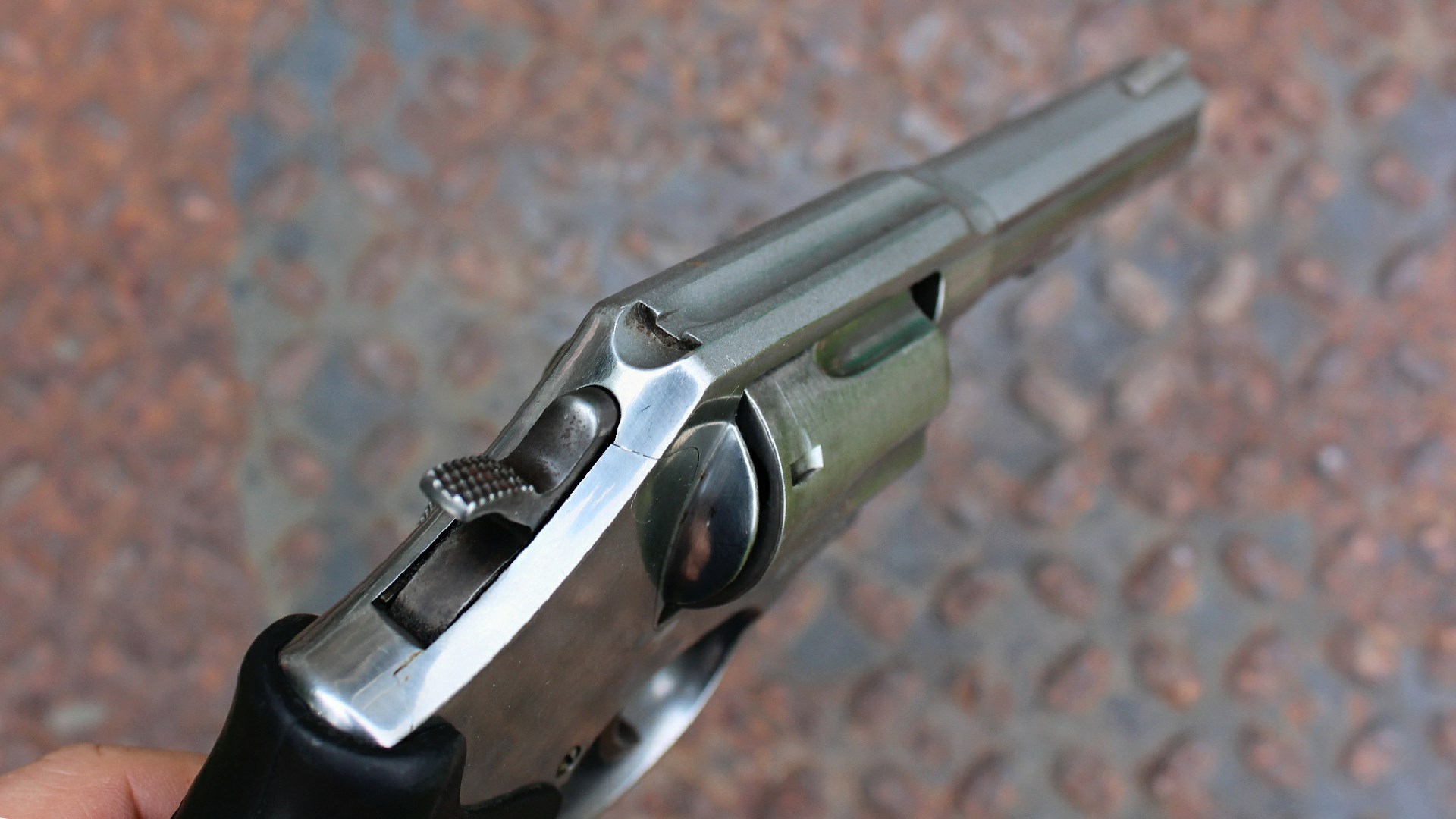
By 1995, the folks operating Smith & Wesson had decided to adopt a two-piece barrel considered by them to be an improvement upon the successful design implemented by rival revolver maker Dan Wesson. The assembly consists of the inner, rifled barrel paired with an outer sleeve, or shroud. The rounded inner barrel would be driven into the frame via a patented method using a specialized wrench seated into the barrel’s muzzle. Since the inner barrel does not support the front sight or the ejector rod extension, it can be torqued to a just-right tension.
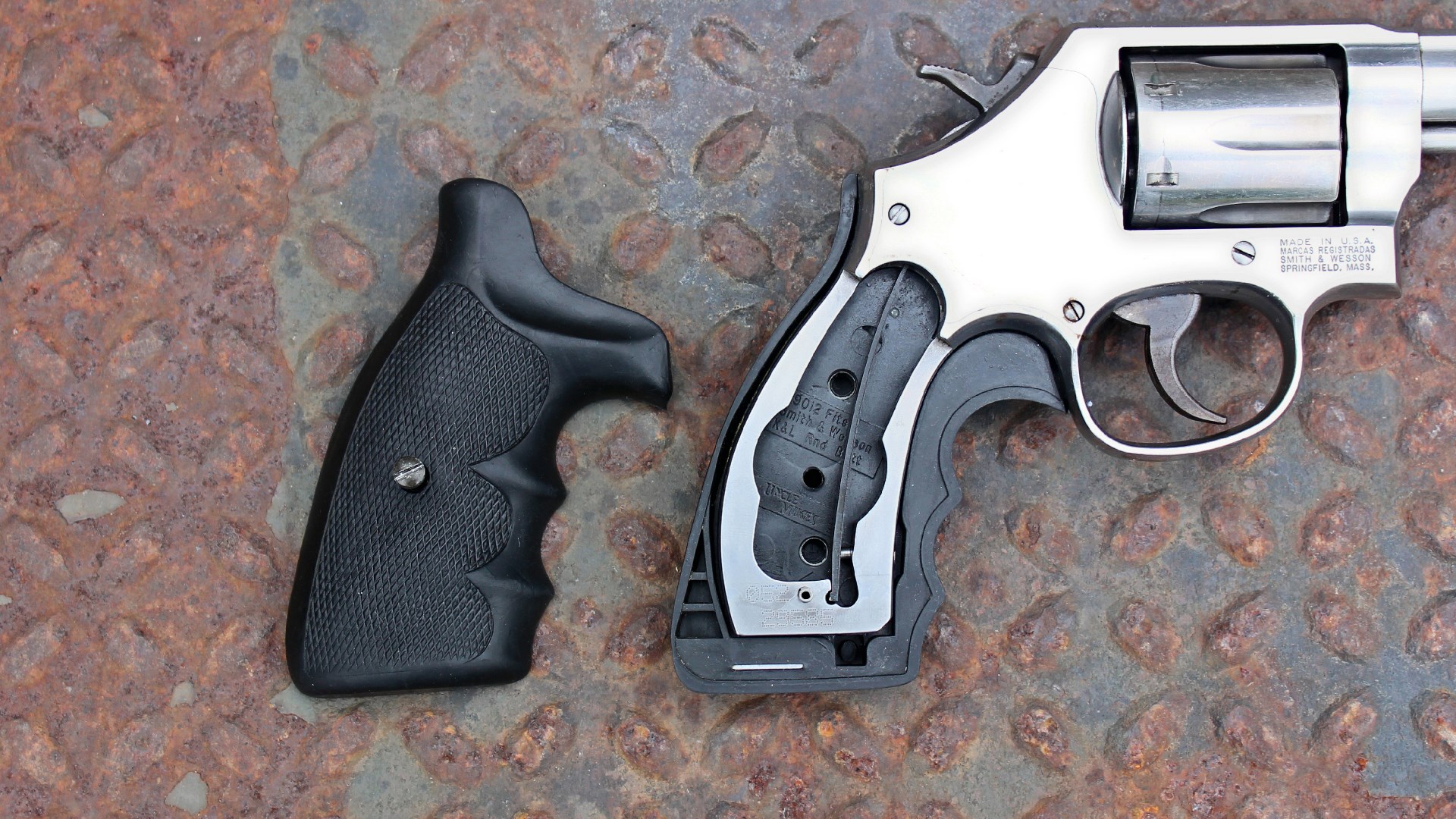
The outer shroud fits over the barrel with a notch at the base that is keyed to a small extension milled into the frame under the barrel. This ensures the shroud is properly aligned. The result of this barrel configuration is a quicker and more precise barrel installation. It has also been reported that the two-piece barrel system, which is still in use by Smith & Wesson today, exhibits greater inherent accuracy than the one-piece barrels. Apparently the tensioned barrel sleeve works to dampen barrel harmonics, resulting in improved shot placement. However, which barrel configuration is best or most desirable, from a collector’s point of view, is one of those topics that continues to be a point of debate among Smith & Wesson revolver devotees.
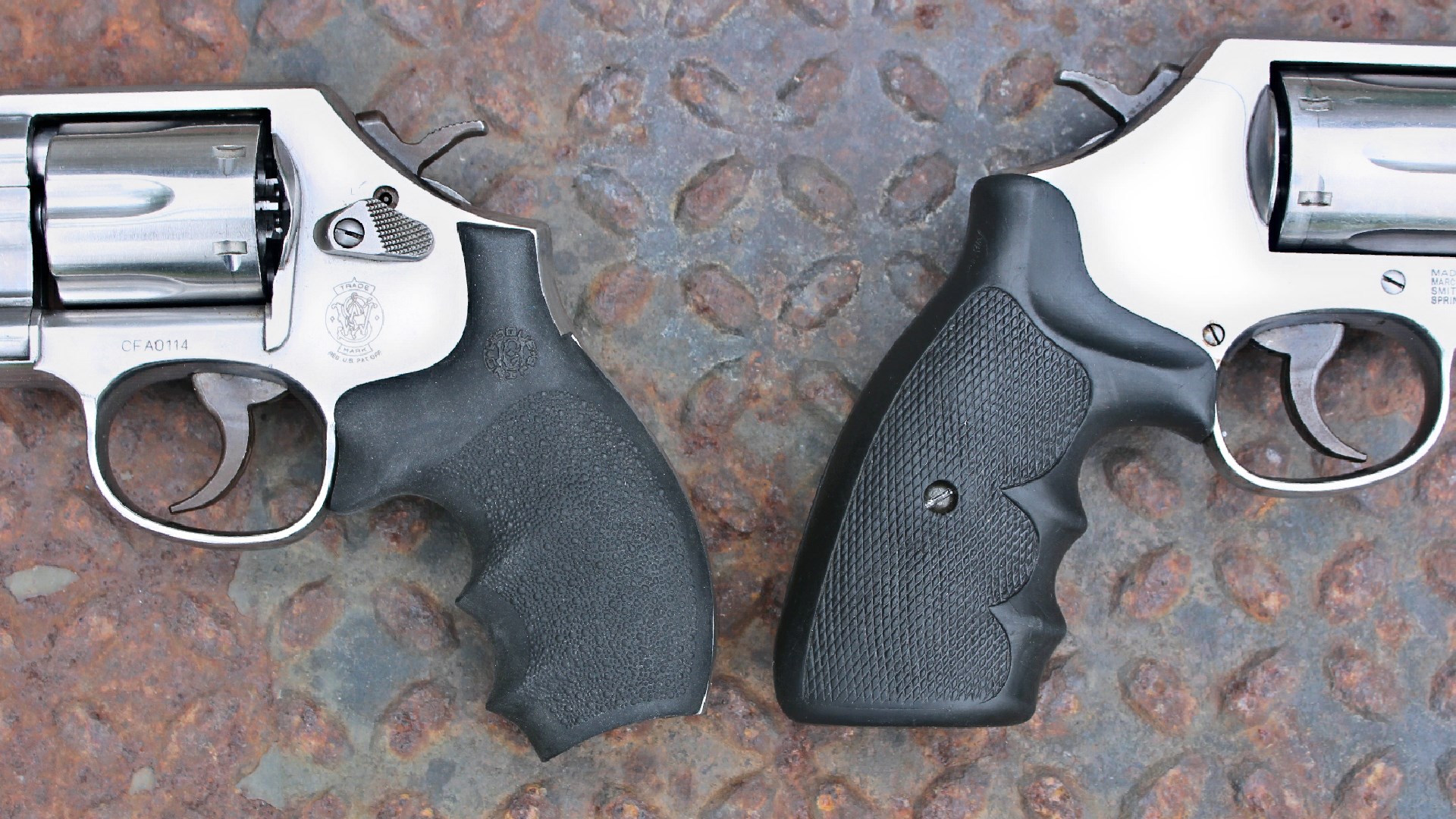
At The Range
At the shooting range, the Model 64-8 proved why it was such a popular workhorse revolver. Although the exterior finish and grip show some wear, this revolver still has plenty of working years left in it. All of the controls and the action operated smoothly and reliably. The Uncle Mike’s grip was both comfortable and hand filling. This gun chambered, fired and ejected all of the ammunition tested without any malfunctions or hang ups of any kind throughout the course of testing.
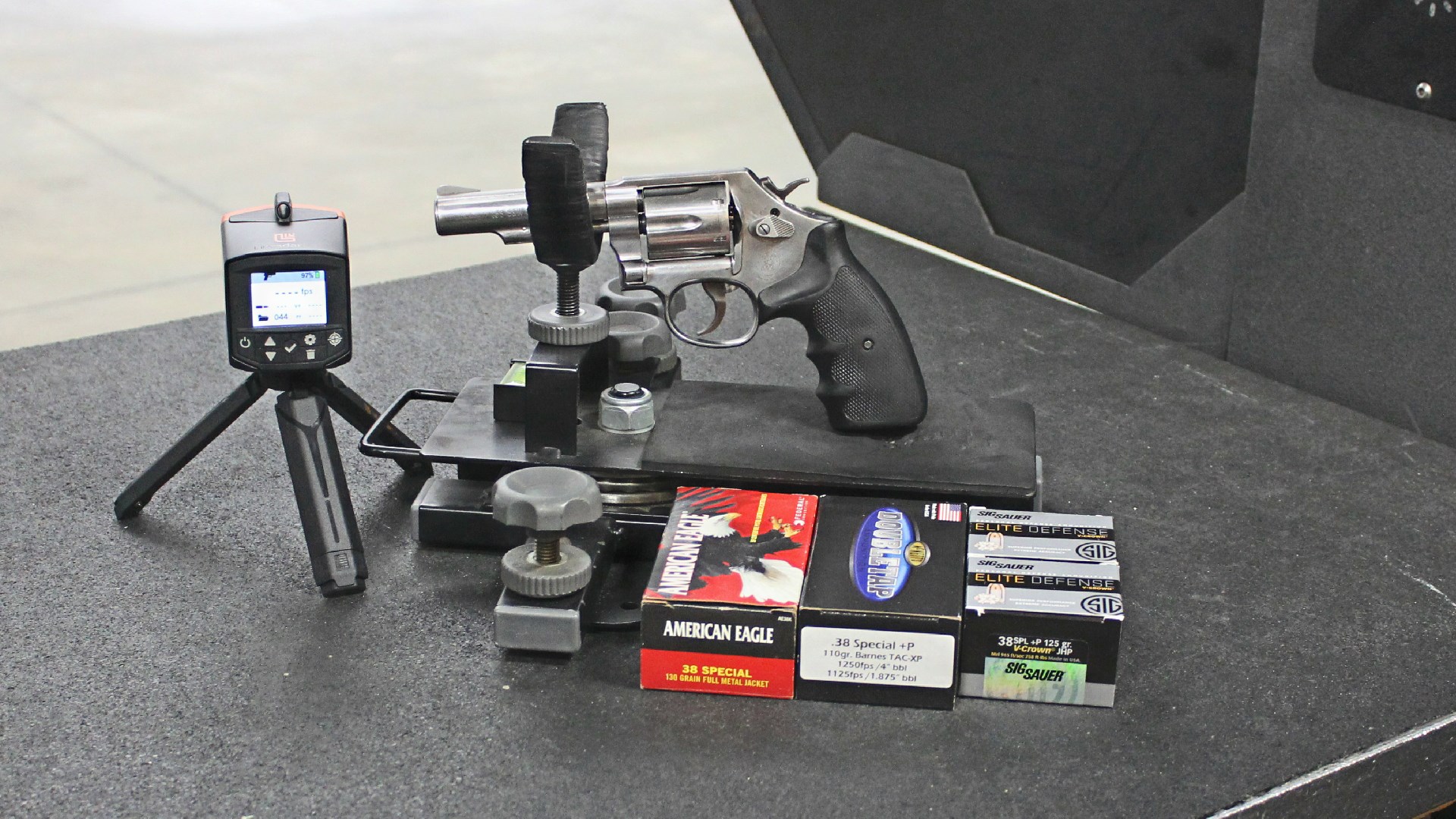
At 36 ozs., this is not a lightweight revolver. But the gun is nicely balanced, giving it a natural, pointable feel. The weight also works in its favor in regards to mitigating felt recoil. Standard pressure .38 Spl. loads are soft shooting when fired from this model, with +P loads bringing the recoil up to only moderate levels. Anyone who feels comfortable wielding a compact 9 mm pistol should find the Model 64 comfortable to work with.
Formal bench-rested accuracy testing was conducted by firing five, five-shot groups with three different loads into paper targets posted at a distance of 15 yards. A LabRadarLX chronograph was on hand to measure average bullet muzzle velocities for 10-shot strings. The ammunition used included Federal Premium’s American Eagle practice-grade, standard-pressure, full-metal jacket load along with defense-grade DoubleTap Ammunition and SIG Sauer Elite Defense +P hollow points. Here are the results:

Parting Shots
The Smith & Wesson K-Frames have a long, rich production history that makes them attractive options for both the serious and more casual handgun collectors. For those who want a softer shooting wheelgun that they can enjoy taking to the range, the used and retired LE models in good condition are durable and reliable .38s, and are available for around half the price of a factory-fresh revolver. And for those who are looking for something completely different from a black polymer, striker-fired 9 mm pistol, the K-frames I’ve worked with have proven to be enjoyable alternative, thanks to the comfortable grips, smooth actions and nicely tuned triggers.
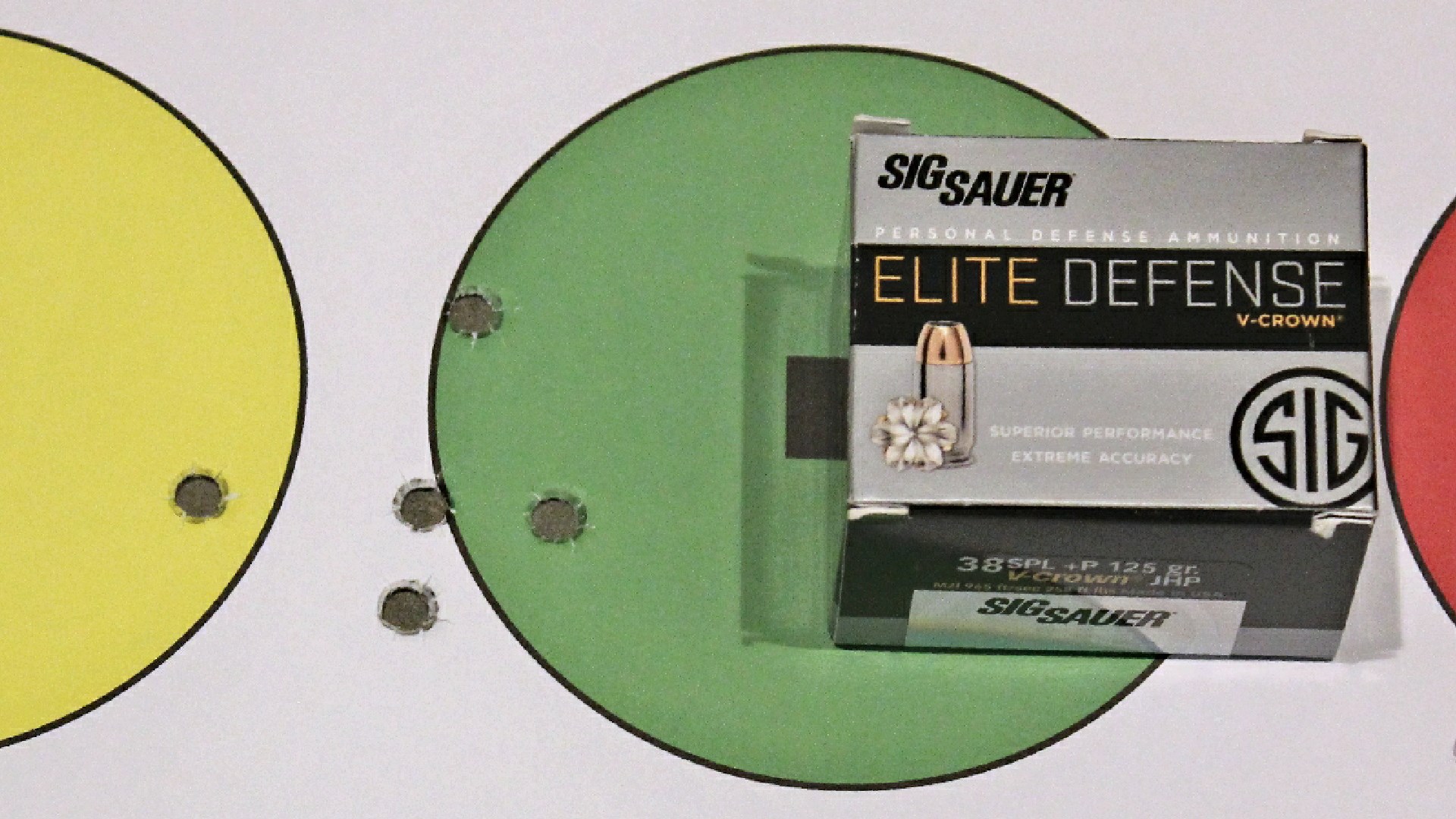
Although they are no longer the stars of the defensive handgun show, replacement grips, holsters and speed loaders for the K-Frames are still plentiful, affordable and easy to find. Thanks to the unwavering popularity of short-barrel, small-frame revolvers, .38 Spl. is still a ubiquitous cartridge available in a wide variety of practice grade and defensive loads. After cleaning, bench checking and range testing the Model 64-7 and 64-8 mentioned here, I would feel just fine about staging either of them for home defense or putting them to work when out and about.
As with most surplus handguns, the current supply of K-Frames will not last forever. If you are interested in owning one, then take a look into them sooner than later. As of this writing, AIM Surplus has sold out of the Model 64-8, which may change in the future. However they still have the one-piece barrel 64-7 in stock. For more information about this and other used handguns, visit aimsurplus.com.

Smith & Wesson Model 64-8 (LE Trade-in) Specifications
Manufacturer: Smith & Wesson (Discontinued)
Distributor: AIM Surplus
Action Type: double-action/single-action revolver
Chambering: .38 Spl. +P
Frame: satin-finish, stainless-steel
Barrel Length: 4″
Rifling: Six-Groove, 1:14.5″ RH Twist
Cylinder Capacity: six-round
Sights: fixed; serrated-ramp front; square-notch rear
Trigger: double-action 8-lb., 12-oz. pull; single-action 3-lb., 8-oz. pull
Overall Length: 8.9″
Height: 5.25″
Width: 1.45″ cylinder
Weight: 36 ozs. unloaded
MSRP: $499.95
Read the full article here

